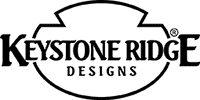July 20, 2017
How To Sort Recycling And Reduce Waste
As a manufacturer of litter receptacles and recycling containers, it only makes sense for us to stay on top of waste disposal trends and growing environmental concerns associated with increasing population and trash. While the details of waste management can be quite complex, in today’s blog post we will touch on some of the basics of trash sorting and zero waste initiatives.
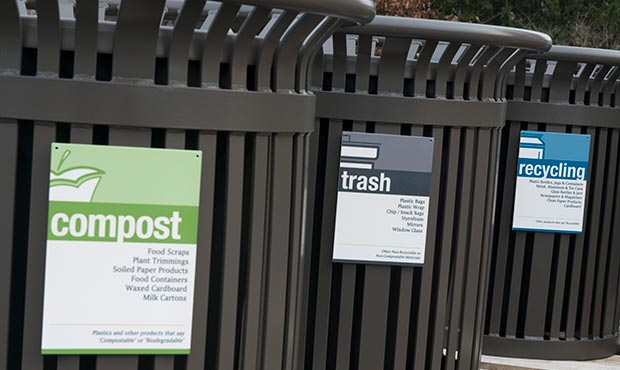
As one of the world’s top producers of trash, the United States has plenty of room for improvement when it comes to waste disposal. To combat the many harmful effects of the tons of trash that pile up in landfills each year, many cities have made commitments to reduce or eliminate waste, a growing trend that we’ve seen with our west coast customers that is gaining traction across the country.
Landfill Diversion: Why Does It Matter?
Landfill diversion refers to the process of preventing trash from ending up in landfills through alternative practices such as recycling and composting. Traditional trash disposal methods not only waste material that could be reinvested in other ways, but it can also lead to harmful methane emissions as it decomposes in landfills.
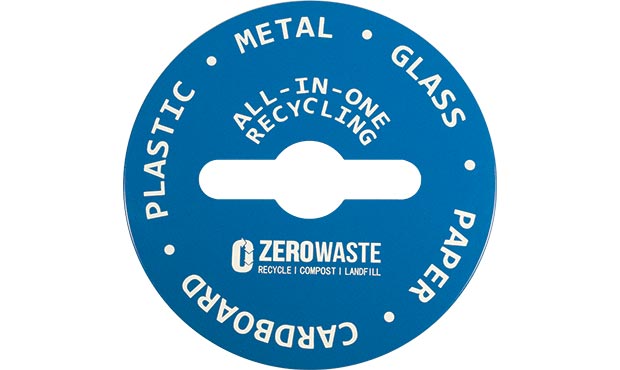
What Is A Zero Waste Initiative?
Cities that have undertaken zero waste initiatives aim to divert 90% or more of waste from landfills to be recycled or composted. This is typically accomplished by encouraging residents and businesses to sort trash into three separate receptacles:
Compostable materials
- Food scraps
- Plant trimmings
- Used paper products such as napkins, coffee cups, and paper take-out containers
Recyclables
- Plastic, metal, and glass containers
- Paper, including cardboard and newspapers
Landfill-bound waste
- Packaging such as chip bags, candy wrappers, and juice boxes
- Styrofoam containers
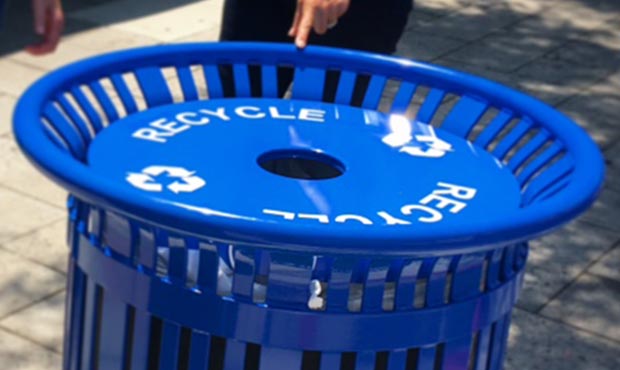
Coming Soon To A City Near You
A great example of the zero waste movement in the United States is San Francisco, where composting has been widely accepted into mainstream culture. San Francisco is striving to achieve its goal of 100% landfill diversion by 2020, and cities across the nation are taking note:
- Los Angeles is currently aiming to reach 90% diversion by 2025.
- New York City is also taking steps to reduce landfill-bound trash and has pledged to achieve zero waste by 2030.
- From our own experience, many smaller cities across the country are making strides by adding sorting receptacles to their streetscapes - from the City of Westin, FL, to the City of Escondido, CA and various places in between.
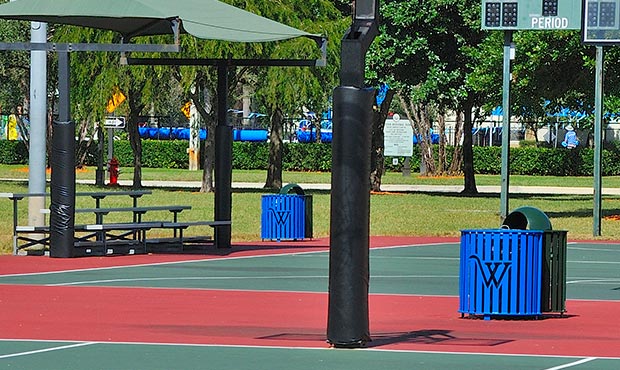
Rethinking Receptacles
An essential component of successful zero waste initiatives is the availability and convenience of receptacles for sorting trash. Clearly-marked waste receptacles enable residents and businesses to accurately identify which items are appropriate for recycling and composting bins, and what materials must be sent to landfills.
Keystone Ridge Designs offers an array of litter receptacles designed to promote easy separation of recyclables from non-recyclables, and our customizable decals make specifying what materials are compostable, recyclable and trash obvious with minimal effort from the user. Our Penn and Midtown Dual Recycling/Litter Receptacles are great options for separating trash, along with our Split Trash/Recycle Lid, customizable with decals to specify what materials can be deposited there.
To learn more about how Keystone Ridge Designs can help you with trash sorting initiatives, browse our collection of recycling receptacles, separating lids, and customizable decals or contact us today.
ARCHIVES
- Summer Starts Outside
- Site Furnishings In Historic Streetscapes
- Tourist Destinations: Taking A Seat At America's Top Attractions
- March Maintenance: Preparing Public Spaces for Peak Season
- Why Quality Matters: The ROI of High-End Site Furnishings
- The Best Time to Invest in Outdoor Furnishings
- Celebrating 100 Blogs
- Hidden Site Furniture Gems: Unique Offerings from Keystone Ridge Designs
- Designing Cohesive Outdoor Spaces with Coordinating Site Furnishings
- The Role of Benches in Public Spaces: More Than Just Seating
- Site Furnishings With Custom Colors - Creativity With Color
- American Makers: Celebrating Our Site Furniture Manufacturing Team
- Love Letter To Litter Receptacles
- The Unique Beauty And Benefits Of Wood-Grain Aluminum By Keystone Ridge Designs
- Keystone Ridge Designs Celebrates World Landscape Architecture Month
- Sustainability At Keystone Ridge Designs
- Mix And Match Site Furniture Designs
- Planning For Planters
- Downtown Decorations: Deck The Streets With Benches & Holly
- Customized Site Furniture Solutions: How To Tailor Site Furnishings To Fit Your Space
- The Making Of A Streetscape
- Powder Coating Perfection
- Project Highlight - UPMC Mercy Pavilion
- Sing A Song Of Site Furnishings
- Transit and Bus Stop Furnishings
- Project Highlight - Latrobe, PA
- Litter Receptacle Lid Options
- Site Furniture Design Details
- Park Furniture
- What's New for 2023
- Trade Show Trips and Trends
- Giving Thanks And Giving Back
- What Are Site Furnishings?
- #FridayFabrication
- Outdoor Furniture For Schools
- Keystone Ridge Designs Top Sellers
- Site Furniture & Urban Design
- Production With Purpose
- Outdoor Chairs for Public Spaces
- Project Highlight: Cape May County Open Spaces
- Site Furniture Sets
- Residential Development Outdoor Trends
- ASLA Expo Recap
- 25 Years of Outdoor Furniture (Part II)
- Healthcare Site Furniture Trends
- Project Highlight - The Highline Pittsburgh
- Tips For Buying A Memorial Bench
- Zoo Furnishings
- Guide To Custom Signage And Graphics
- Outdoor Church Furniture
- Site Furniture Standards
- What Is A bollard?
- Outdoor Furniture For Ski Resorts
- Commercial Outdoor Furniture Trends for 2021
- 2020 Greatest Hits In Site Furnishings
- Design Timeline - Patented Site Furniture
- Spotlight On Garden Furniture
- 25 Years Of Outdoor Furniture
- Unique Outdoor Spaces
- Tips For Choosing Commercial Outdoor Table Sets
- Project Highlight - Longevity Bench Project
- Promoting Healthy Outdoor Spaces
- Signs Of Spring
- Project Highlight - Pianos About Town
- Powder Coating Color Trends
- All-Weather Site Furnishings
- Top 6 Traditional Commercial Bench Designs
- Top 9 Modern Outdoor Benches For Commercial Settings
- Made In The Shade: Choosing The Best Commercial-Grade Umbrella
- Outdoor Seating Alternatives: Think Outside The Bench
- Project Highlight - The Tracks At Brea
- Sites Of Summer
- Fundraising With Furnishings
- Durable Site Furniture - What Does That Mean?
- Customization 102
- New For 2019
- How It's Made
- Fall Photos And Furnishings
- Site Furnishings For Senior Living
- Project Highlight - Echo Park Lake
- Park Bench Workout
- Site Furniture And Planning For Public Safety
- The Art Of Bike Racks
- Site Furniture Materials 101
- What's New?
- Project Highlight - Carson City Revitalization
- Reducing Waste - It Takes All Sorts
- Putting The Fun In Furniture
- Site Furniture Placement Guidelines
- Project Highlight - City Of Weston, FL
- Focus On Photography
- Thankful At Thanksgiving
- How To Accessorize Your Landscape
- Why Powder Coat?
- Top 5 Unusual Customizations
- Site Furniture For Kids
- Customization 101
- Project Highlight - McCandless Crossing
- How To Save Money On Site Furniture
- Christmas With Keystone Ridge Designs
- Retail Branding
- Halloween Costume Ideas
- The Benefits Of Steel Site Furniture
- A Campus Standard - Why It's Important
- Guide To Plaques
- Four Trends In Site Furniture
